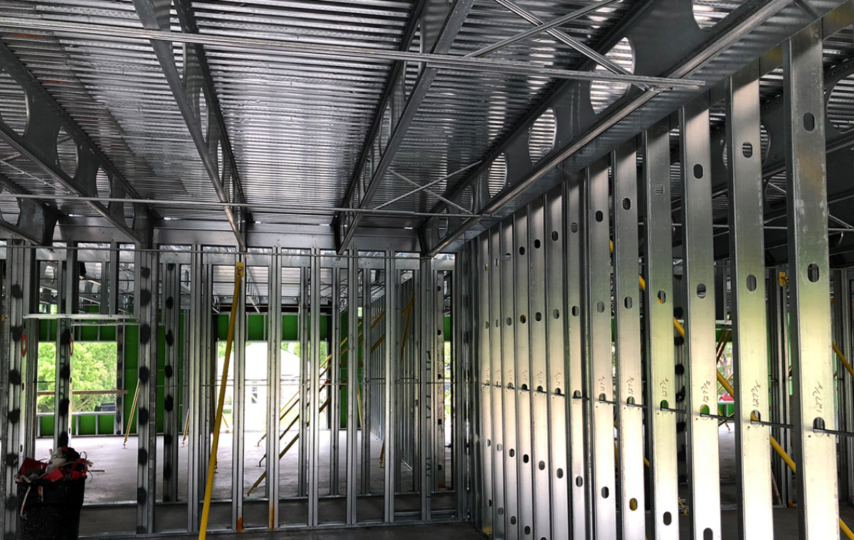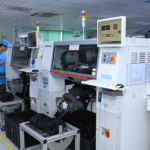For the construction of commercial structures that stand tall and endure the test of time, steel has emerged as the ideal building material. Skyscrapers dominating urban skylines and sustainable buildings encouraging environmental stewardship are examples of how commercial steel framing has transformed the construction sector. Here, we will discuss commercial steel framing, exploring its benefits, applications, and contribution to sustainable development.
The Rise of Commercial Steel Framing
Commercial steel framing has experienced a meteoric rise in popularity, and for a good reason. Steel buildings offer a range of advantages over traditional construction methods, making them the preferred choice for architects, developers, and building owners.
1. Strength and Durability
One of the most notable benefits of commercial steel framing is its exceptional strength and durability. Steel is renowned for its ability to withstand extreme weather conditions, seismic events, and even fires. This makes it an ideal choice for skyscrapers, where the structural integrity of the building is paramount.
2. Design Flexibility
Steel offers unparalleled design flexibility, allowing architects to create innovative and visually striking structures. With commercial steel framing, the limitations imposed by traditional construction methods are lifted, enabling the construction of unique shapes and complex architectural features.
3. Speed of Construction
Steel buildings can be erected quickly and efficiently, thanks to steel components’ prefabrication and modular nature. This reduces construction time and minimizes disruptions to neighboring buildings and communities. The speed of construction associated with steel framing makes it an attractive choice for tight project schedules.
Applications of Commercial Steel Framing
The applications of commercial steel framing are vast and varied. Let’s look at some key sectors steel buildings have significantly impacted.
1. Skyscrapers
Skyscrapers have long been seen as a representation of urbanization and progress. To build these enormous structures, commercial steel framing was essential. Skyscrapers may reach previously unimaginable heights while preserving structural stability because of the inherent strength of steel. Some of the most recognizable architectural icons in the world have been made possible by steel’s strength and design adaptability.
2. Industrial Buildings
Industrial structures like warehouses and manufacturing plants frequently call for big, wide spaces with no interruption from columns. The best option is steel framing since it enables large spans without requiring a lot of structural support. This makes it possible to utilize space effectively, boosting productivity and increasing storage capacity.
3. Retail and Commercial Spaces
Commercial steel frame is frequently used to construct retail and commercial spaces, from shopping centers to office buildings. Due to steel’s adaptability, open floor layouts, big windows, and beautiful facades are possible. Steel structures are simple to expand and modify, allowing firms to adapt to shifting needs.
Sustainability and Steel Framing
In the building sector, sustainability is now a crucial factor. Commercial steel framing has become a popular sustainable option since it has several positive environmental effects.
1. Recyclability
One of the materials that is recycled the most globally is steel. Components of steel frames can be recycled endlessly without losing their strength or quality. This lessens the demand for raw resources and the negative effects of mining and extraction on the environment.
2. Energy Efficiency
It is possible to design steel structures to be very energy-efficient, lowering their carbon footprint. Steel’s thermal characteristics make building well-insulated buildings with low heating and cooling energy requirements possible. Additionally, steel roof structures may accept solar panels to boost the production of sustainable energy.
3. Reduced Waste
Commercial steel framing prefabrication produces a small amount of waste on the construction site. Off-site manufacturing of precisely specified steel components eliminates the need for wasteful trimming and cutting during assembly. Steel frame becomes environmentally friendly due to reducing construction waste, time, and labor expenses.
4. Cost Effectiveness
Commercial steel framing offers significant cost advantages compared to traditional construction methods.
a. Long-Term Savings: Steel buildings have lower maintenance costs and longer lifespans than other materials, resulting in long-term savings for building owners.
b. Speed of Construction: The efficient construction process of steel buildings reduces labor costs and shortens project timelines, minimizing overall construction expenses.
c. Insurance Savings: Steel’s resistance to fire, extreme weather, and pests often leads to lower insurance premiums for steel buildings, providing further cost savings.
Conclusion
Skyscrapers are now being replaced by sustainable buildings thanks to commercial steel framing. Commercial steel framing will surely be at the forefront as we keep supporting the future of construction, altering our urban environments, and promoting a more sustainable built environment.
To discuss your commercial steel framing requirements, get in touch with Coastal Steel Structures right away. We’d be honored to work with you to build long-lasting, effective, green structures. We can influence the development of the industry and produce a built environment that is more sustainable by working together.








